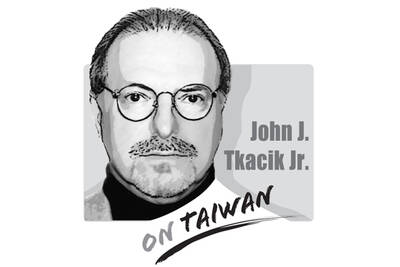This year marks the 300th anniversary of the birth of Adam Smith, the founding father of modern economics. It comes at a time when the global economy faces several daunting challenges. Inflation rates are the highest since the late 1970s. Productivity growth across the West remains sluggish or stagnant. Low and middle-income countries are teetering on the brink of a debt crisis. Trade tensions are rising. And market concentration has increased among Organisation for Economic Co-operation and Development countries.
Against this backdrop, Smith’s tercentenary is an opportunity to reflect on his invaluable insights into the dynamics of economic growth and consider whether they can help us understand the current moment.
At the heart of Smith’s theory of economic growth, outlined in the first chapter of his seminal work The Wealth of Nations, is the specialization facilitated by the division of labor. By breaking down production into smaller tasks — a process illustrated by Smith’s famous example of the pin factory — industrialization enabled enormous gains in productivity.

Illustration: Yusha
However, this process is not confined to individual firms. Since the division of labor, according to Smith, is “limited by the extent of the market,” the market must expand through exchange. After all, boosting daily widget production from 100 to 10,000 is pointless if no one wants to buy widgets. So, the division of labor is a collective process that involves a continuous process of structural economic change. When there is a larger supply of affordable widgets, the widget-using sectors of the economy can expand production and reduce prices. Meanwhile, the market’s increased size would allow upstream suppliers of materials required to produce widgets to reorganize production into more specialized tasks.
As the US economist Allyn Young noted in 1928, this is a dynamic story of increasing returns. The growth process is a virtuous circle of structural change that starts slowly and then accelerates, like an avalanche. The Industrial Revolution and the rapid growth of East Asia’s “tiger” economies during the 1980s and 1990s are perfect examples of the process Smith identified. And yet, the stagnant growth that has plagued developed economies over the past decade raises the question of whether global progress toward what he described as “universal opulence” has ground to a halt.
Although the division of labor into specialized tasks has often enhanced the skills and expertise of workers, this might not always be the case. The emergence of generative artificial-intelligence models has fueled concerns that employers would use these technologies to deskill human workers and cut costs, prompting calls for regulatory interventions to ensure that AI augments, rather than replaces, human capabilities.
Moreover, while economic growth since the onset of the Industrial Revolution has led to astonishing advances in health and well-being, it is important to recognize that the institutional frameworks and political choices that enabled this progress were the result of intense social struggles.
Another concern that is often overlooked stems from market size. Smith would likely have been shocked by the extent of specialization in the 21st-century economy (and probably also pleased with his foresight). Today, manufacturing relies heavily on complex global production networks. Final products such as automobiles and smartphones comprise thousands of components manufactured in multiple countries. Many of the intermediate links in those supply chains are extraordinarily specialized. The Dutch company ASML, for example, is the only producer of the ultraviolet lithography machines needed to produce advanced chips, most of which are manufactured by Taiwan Semiconductor Manufacturing Co.
However, the widespread nature of this phenomenon suggests that the global market for many products can sustain only a few companies capable of achieving economies of scale. While this has long been the case for large manufacturers in sectors such as aerospace, it increasingly applies to smaller markets for intermediate components.
Consequently, Smith’s other condition for economic growth — the presence of competition — is not met. Competition helps to ensure that economic growth is socially beneficial, because it prevents firm owners from monopolizing the benefits of specialization and increased exchange.
As Smith put it in The Wealth of Nations, “[i]n general, if any branch of trade, or any division of labor, be advantageous to the public, the freer and more general the competition, it will always be the more so.”
Although the decline of competition has been a growing concern in Western economies over the past few years, the debate has largely focused on high-profile sectors within domestic markets, such as Big Tech. Policymakers on both sides of the Atlantic have responded to concentration in the tech industry with new laws, such as the EU’s Digital Markets Act, and tougher enforcement of existing antitrust laws, such as the US Federal Trade Commission’s recent decision to block Microsoft’s takeover of Activision.
However, the deeper policy question is whether the level of specialization in certain markets has reached a tipping point where there is a trade-off between Smith’s two prerequisites for growth. Has the division of labor reached its limit — and is the need to enhance competition therefore another reason to diversify supply chains and develop new sources of supply of production?
Diane Coyle, professor of public policy at the University of Cambridge, is the author, most recently, of Cogs and Monsters: What Economics Is, and What It Should Be (Princeton University Press, 2021).
Copyright: Project Syndicate
A 50-year-old on Wednesday last week died while under anesthesia at a Taipei cosmetic clinic shortly after undergoing a penis enlargement procedure. The surgeon was arrested for suspected medical malpractice, again bringing to the surface shortcomings in the regulation of cosmetic medicine. Media reports said the clinic owner and surgeon, surnamed Ting (丁), was previously convicted of negligent homicide for a postsurgical death and had been charged with coercion and aggravated assault after allegedly stopping a patient from calling for an ambulance. He had also been fined for failing inspections and had allegedly permitted people without medical licenses to assist

It was most annoying last week to read Chairman Xi Jinping’s (習近平) fulsome encomium to the People’s Liberation Army during the Eightieth Anniversary celebrations of victory over Japan in World War II. Comrade Xi’s soaring rhetoric was stuffed with “martyrs, sacrifice, solemnity and unwavering resolve” in praise of the “Chinese People’s War of Resistance Against Japanese Aggression and the World Anti-Fascist War.” His aspirations overflowed with “world peace” and love of the United Nations, of which China is a founding member. The Liberation Army Daily said that every word from General Secretary Xi Jinping “resounded in his powerful voice, illuminating the
OpenAI CEO Sam Altman recently sat down for an interview with former Fox News host Tucker Carlson in which he openly acknowledged that ChatGPT’s model behavior is indeed influencing the entire world, and that he himself is responsible for the decisions related to the bot’s moral framework. He said that he has not had a good night of sleep since its launch, as the technology could bring about unpredictable consequences. Although the discussion took place in the US, it is closely related to Taiwan. While Altman worries about the concentration of power, the Chinese Communist Party (CCP) has already weaponized artificial
When a Reuters reporter asked Chinese Ministry of Foreign Affairs spokesman Lin Jian (林劍) about Minister of Foreign Affairs Lin Chia-lung’s (林佳龍) European tour, Lin Jian expressed displeasure, referring to Lin Chia-lung as “merely a local foreign affairs official in China,” and reiterating the Chinese Communist Party’s (CCP) oft-used claim that Taiwan is a Chinese “province.” This response is a political falsehood. Although such statements have become standard fare in the CCP’s external messaging, they expose its deepest anxieties. The CCP fears confronting international reality and is even unnerved by the prospect of Taiwan’s subjectivity on the world stage. The CCP